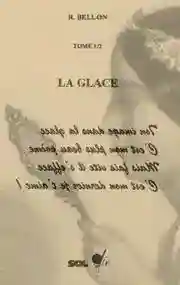Syriac love poem
ܠܡܪܐܐ
ܨܘܪܬܟ ܠܡܪܐܐ
ܡܘܫܚܬܐܠܗ ܒܫ ܫܦܝܪܬܐ
ܒܣ, ܩܠܠܐ ܒܕ ܐܙܠܐ,
ܡܕ ܐܝܠܐ "ܟܪܚܡܢܟ" ܚܪܝܬܐ!

With the Maḏnḥāyā script
ܠܡܪܐܐ
ܨܘܪܬ݁ܟ݁ ܠܡܪܐܐ
ܡܘܫܚܬ݁ܐܠܗ ܒ݁ܫ ܫܦ݁ܝܪܬ݁ܐ
ܒ݁ܣ, ܩܠܠܐ ܒ݁ܕ݁ ܐܙܠܐ,
ܡܕ݁ ܐܝܠܐ "ܟ݁ܪܚܡܢܟ݁" ܚܪܝܬ݁ܐ!
With the Serṭā script
ܠܡܪܐܐ
ܨܘܪܬ݁ܟ݁ ܠܡܪܐܐ
ܡܘܫܚܬ݁ܐܠܗ ܒ݁ܫ ܫܦ݁ܝܪܬ݁ܐ
ܒ݁ܣ, ܩܠܠܐ ܒ݁ܕ݁ ܐܙܠܐ,
ܡܕ݁ ܐܝܠܐ "ܟ݁ܪܚܡܢܟ݁" ܚܪܝܬ݁ܐ!
A romanization of my poem
Lmrʾʾ
Ṣwrtk lmrʾʾ
Mwshḥtʾlh bsh shpyrtʾ
Bs, qllʾ bd ʾzlʾ,
Md ʾylʾ "krḥmnk" ḥrytʾ!

→ French poem ←
Syriac language
The love poem in its Syriac version (alternatives : Ancient Syriac, Suryaya, Classical Syriac, Syrian Aramaic, Suryoyo, Syro-Aramaic, Syriac Aramaic, Western Syriac, Eastern Syriac, Lishana Atiga, Autonym : ܣܘܪܝܝܐ, Suryāyā, Suryoyo).
Three million speakers speak Syriac a Western Semitic language of the northwestern (Levantine) group, spoken in the Near East, variant of the Aramaic spoken in Edessa, which developed with Christianity in the 2nd century.
Edessa, who today is called Urfa, a city in southeastern Turkey, was in ancient times an important Christian cradle.
There are several dialects of Syriac; this version comes from northern Iraq. Syriac has a consonantal writing system derived from Aramaic.
Edessa being one of the center of Christianity, the bible was translated into Syriac, then will appear an important corpus of Christian Syriac writings, and Syriac will be used more and more as a literary and liturgical language.
Syriac is one of the four best-documented Semitic languages (Arabic, Hebrew, Akkadian), even if the vast majority of texts are of religious obedience.
The oldest Syriac text known to date is dated to the 1st century.
Many Syriac dialects continued to be used until the 11th century, and today there are two forms: a classical literary form (east and west), and the vernacular itself composed of several dialects.
After being the language of Syriacs, Assyrians, Chaldeans, Maronites and Christians of Kerala, it remains an important liturgical language.
We find the first inscriptions, at the beginning of our era. These inscriptions clearly show its link with ancient Aramaic.
From the beginning, the Syriac literature in Mesopotamia, has been quite rich, whether pagan, Christian or Jewish. The golden age of this literature is between the 5th and the 9th century, with more than 70 known or unknown authors, dealing with mathematics, medicine, philosophy, literature, theology, etc.
After the Arab conquests, although relegated to the language of a just tolerated community, it was Syriac which would disseminate Greek science to the Arab world, then later to Europe via Spain ... but because of this conquest, little by little, it will begin to decline.
Three scripts are used for Syriac: the first called estrangelo, dates from the 5th century, then two scripts derived from it, will be used respectively for writing, East and West Syriac.
The Mongol script, of Genghis Khan era, is derived from that of Syriac.
Originally Syriac designate the populations originating from Mesopotamia, who live in the East, and have become Christians.